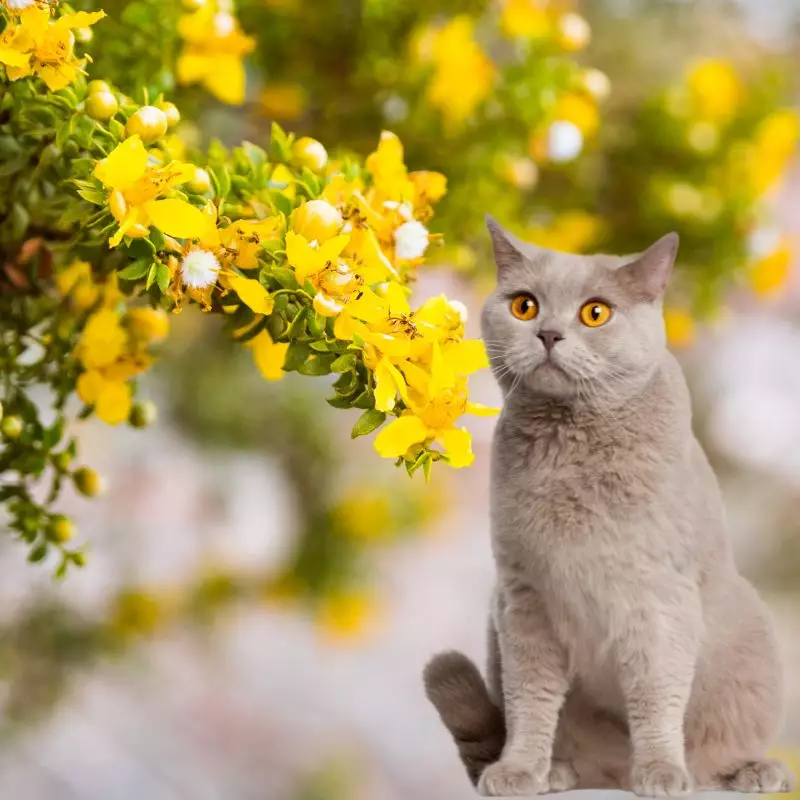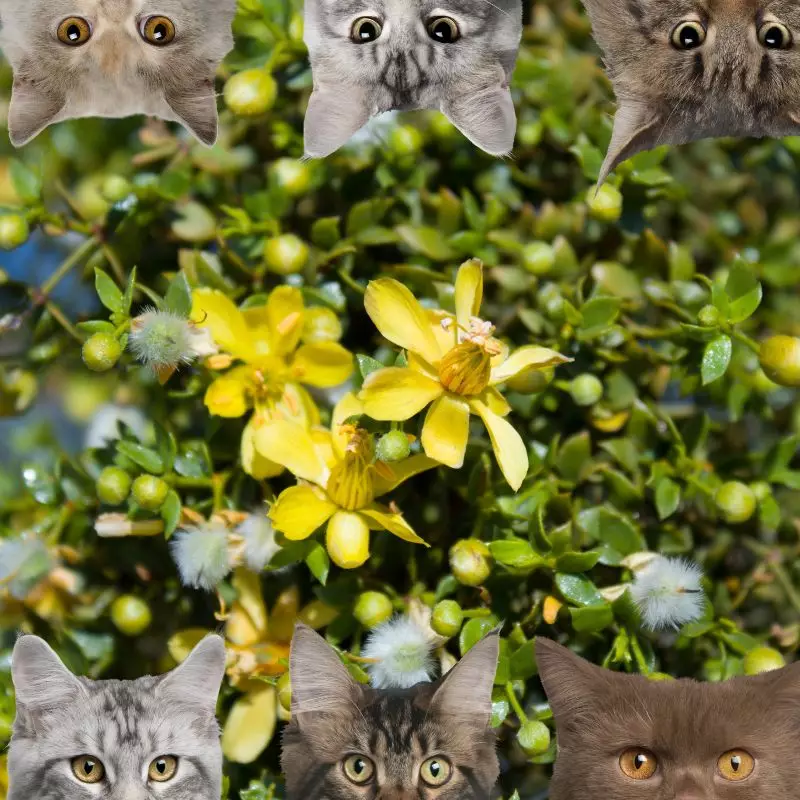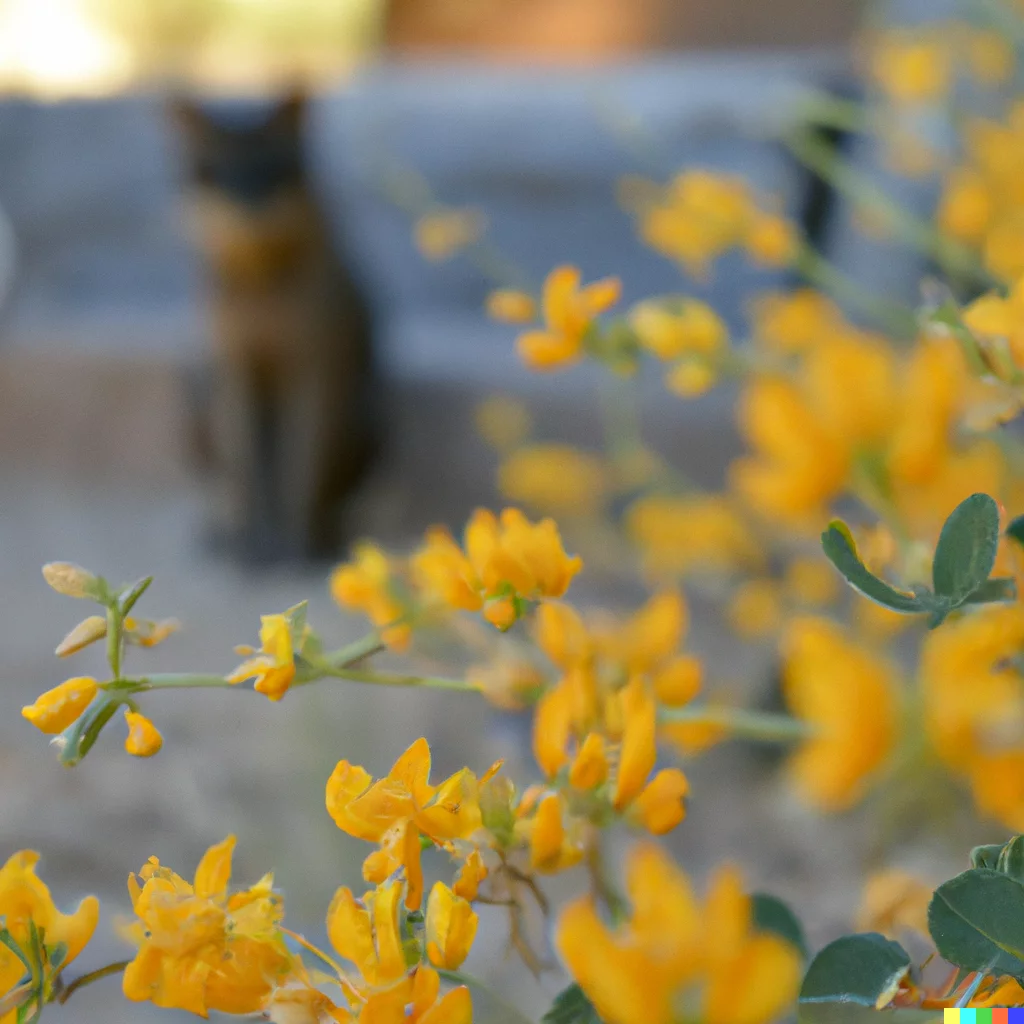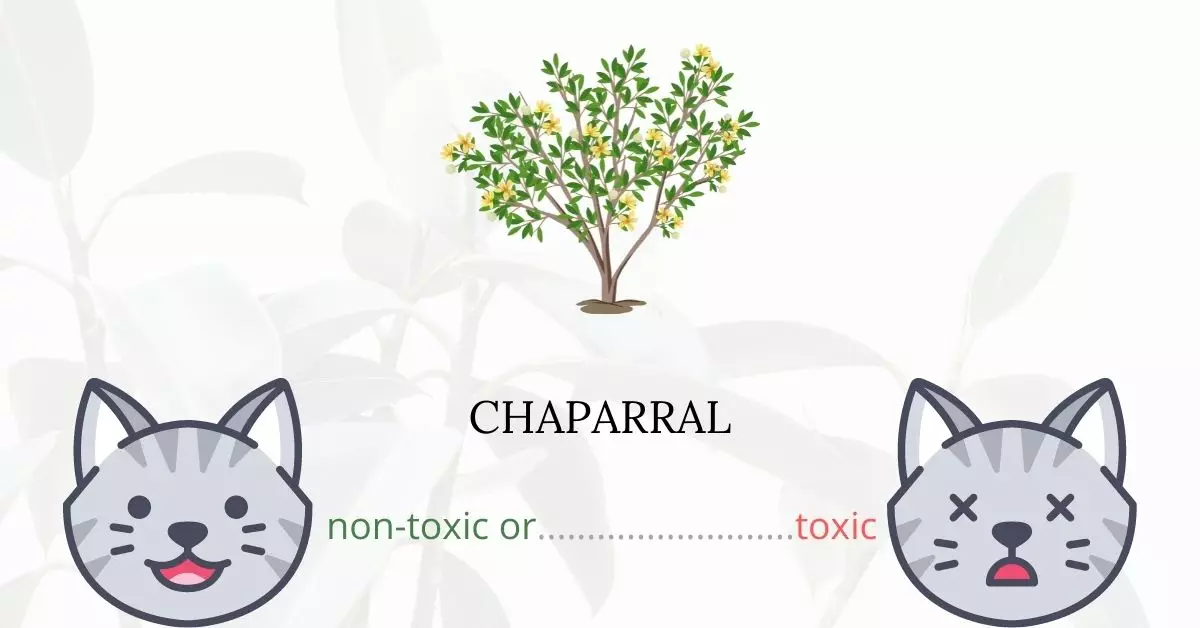Chaparral is not toxic for cats. According to authoritative sources such as the ASPCA (American Society for the Prevention of Cruelty to Animals) and PetMD, chaparral is listed as a non-toxic plant for dogs, cats, and horses.
This article has been crafted in collaboration with a team of experienced DVMs (doctors of veterinary medicine). Their valuable insights and expertise ensure that we provide you with accurate and up-to-date information concerning the potential risks associated with various plants, especially chaparral, and their impact on cats.
While chaparral is predominantly used as a medicinal herb and commonly found in the arid deserts of North America, the chances of your cat encountering this plant might be minimal. Nonetheless, it’s paramount for every pet owner to be informed about which plants are safe for their beloved feline companions.
Can Cats Eat Chaparral?

Cats can bite, nibble, or eat chaparral without suffering from life-threatening consequences. Chaparral does not contain poisonous substances that can cause fatality in cats. As long as your cat has eaten a small portion of chaparral, there is no need to worry.
However, you should not feed your cat big amounts of plants because it may induce indigestion. Because cats are carnivores, their bodies are not prepared to digest plant stuff.
What is Chaparral?

Chaparral is also called Creosote Bush and Greasewood. Scientifically, it is known as Larrea tridentata from the Zygophyllaceae plant family. This plant is endemic to western North America and South America. It is widely distributed in the Mojave, Sonoran, and Chihuahuan Deserts of western North America.
Chaparral is an evergreen shrub that may grow to be one to three meters tall. It has dark green, resinous leaves with two opposing lanceolate leaflets joined at the base and divided by a deciduous awn. Chaparral flowers feature five golden petals and can grow up to an inch in diameter. The entire plant has a distinct creosote odor, giving origin to the common name. Its odor is commonly associated with the “smell of rain” in locations where it grows.
Native Americans believed that Larrea tridentata could cure diseases such as sexually transmitted diseases, tuberculosis, chickenpox, dysmenorrhea, and snakebite. However, the United States Food and Drug Administration (FDA) has issued warnings about the health dangers of eating chaparral or using it as internal medicine and discourages its use.
Keeping Cats Away From Chaparral

We are giving tips on how to prevent your cat from getting their paws on your houseplants. The best way is to teach your cats to stay away from plants. This may cost you a lot of time but if you will be patient enough, both your cats and plants will benefit from it.
You may also utilize items that cats dislike to deter them from getting near your plants. Aluminum foils are highly suggested by experts to use. Cats loathe the crinkly sound, texture, and smell of aluminum foil so they will most likely avoid it if you place it on your garden soil or wrap it around your plant pots.
Natural deterrents can also be used. Before purchasing and applying the repellent to your plants, read the package and examine the contents.
Plants to Avoid For Your Cats
If you are a cat owner and unsure if the plants growing in your yard are harmful to your cats, check out this list of toxic plants for cats. You can also check our list of non-toxic plants for cats.





